Understanding AC Unit Replacement Costs in 2025
Replacing your AC unit is a significant investment, and understanding the AC unit replacement cost is essential to ensure you’re making an informed decision. This guide will help you understand what factors affect the AC unit replacement cost, how to choose the best unit for your budget, and how to get the best deal when it’s time to upgrade. Whether you’re replacing an old unit or installing a new one, knowing the true cost is key to making a smart investment.
What Impacts the Cost of Replacing an AC Unit?
The cost of replacing an AC unit can vary significantly based on several key factors. Here are the primary elements that influence the price:
-
AC Unit Size and Cooling Capacity:
The larger the unit, the more it will cost. AC units are sized based on the cooling capacity measured in BTUs (British Thermal Units). If you need a larger unit to cool a bigger space, expect to pay more. However, choosing the right size is critical for energy efficiency. An oversized or undersized unit can lead to higher energy bills, so selecting the correct size is essential. -
Type of AC System:
The type of system you choose will also impact the cost. Central air conditioning systems, ductless mini-split systems, and window units all vary in price. Ductless systems tend to be more expensive due to their installation complexity, while window units are usually more affordable. -
Installation Complexity:
If your home requires new ductwork, or if the installation involves additional challenges, such as upgrading electrical systems, this will increase the overall cost. A simple installation in a home with existing ductwork will be cheaper than one that requires major modifications. -
Efficiency Rating (SEER Rating):
A higher Seasonal Energy Efficiency Ratio (SEER) rating indicates a more energy-efficient unit. Although higher SEER-rated units can cost more upfront, they will save you money on energy bills in the long run. Many homeowners opt for units with a higher SEER rating to reduce future energy costs.
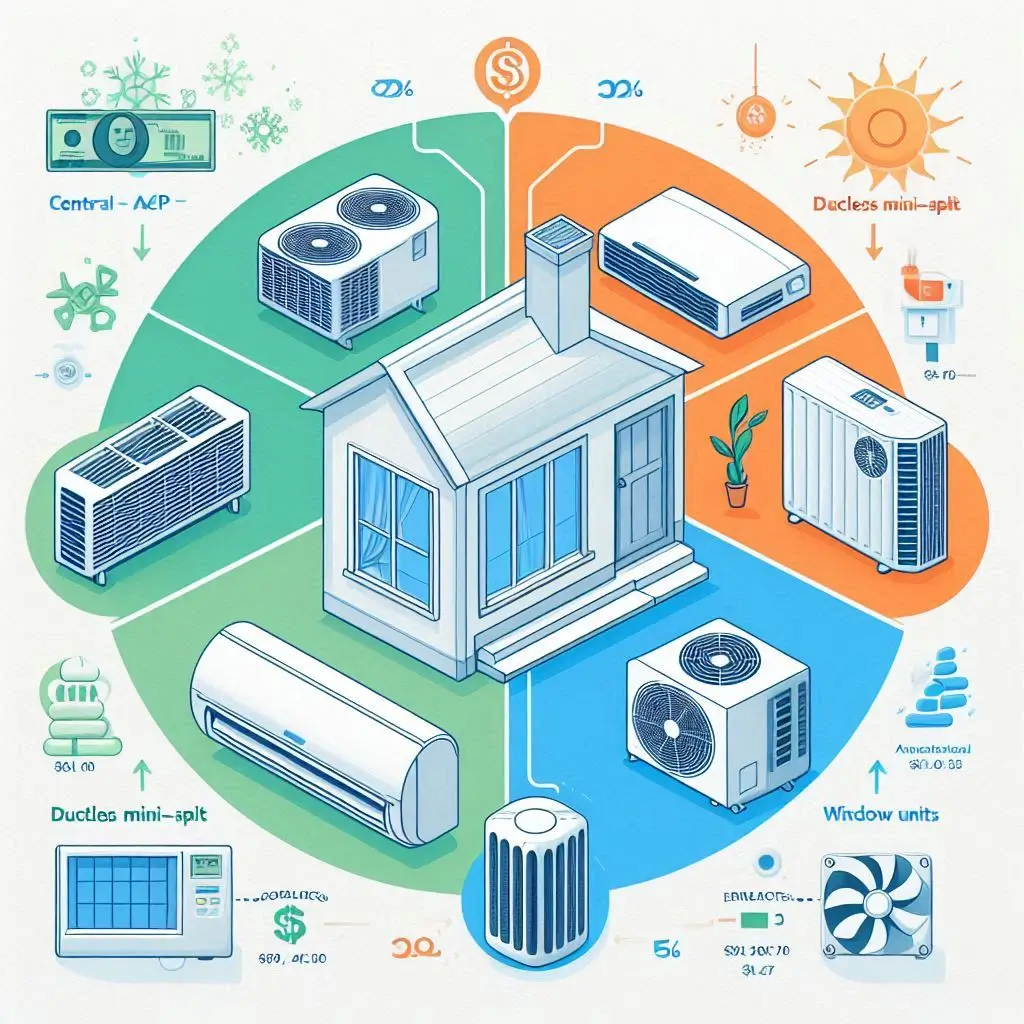
Key Factors Affecting AC Unit Replacement Pricing
Several other factors contribute to the overall cost of replacing an AC unit. Let’s break them down:
-
Labor and Installation Costs:
Labor costs vary depending on the HVAC company and your location. In general, you’ll pay for the time it takes to install the system, as well as any additional work, such as removing the old unit or modifying the electrical wiring. Labor costs can range from $500 to $2,000, depending on the complexity of the installation. -
Location of Installation:
Your geographical location plays a major role in determining the cost of AC unit replacement. Areas with higher costs of living or a higher demand for HVAC services may have higher installation costs. Additionally, some locations require specific permits or inspections, which can increase the cost of the installation. -
Additional Features and Add-ons:
Certain features or add-ons, such as air purification systems, UV light installations, or smart thermostats, can increase the price of an AC replacement. These optional upgrades improve air quality, enhance system performance, and provide better control, but they come at an additional cost. -
Removal of Old Unit:
If your current AC unit needs to be removed and disposed of, this could add an extra fee to your replacement cost. HVAC companies often charge a removal fee, which can vary depending on the size and complexity of the old unit’s removal. -
Brand and Model:
The brand you choose can significantly impact the price. Premium brands with higher efficiency ratings and longer warranties will typically cost more. However, these investments can pay off with better performance and longevity.
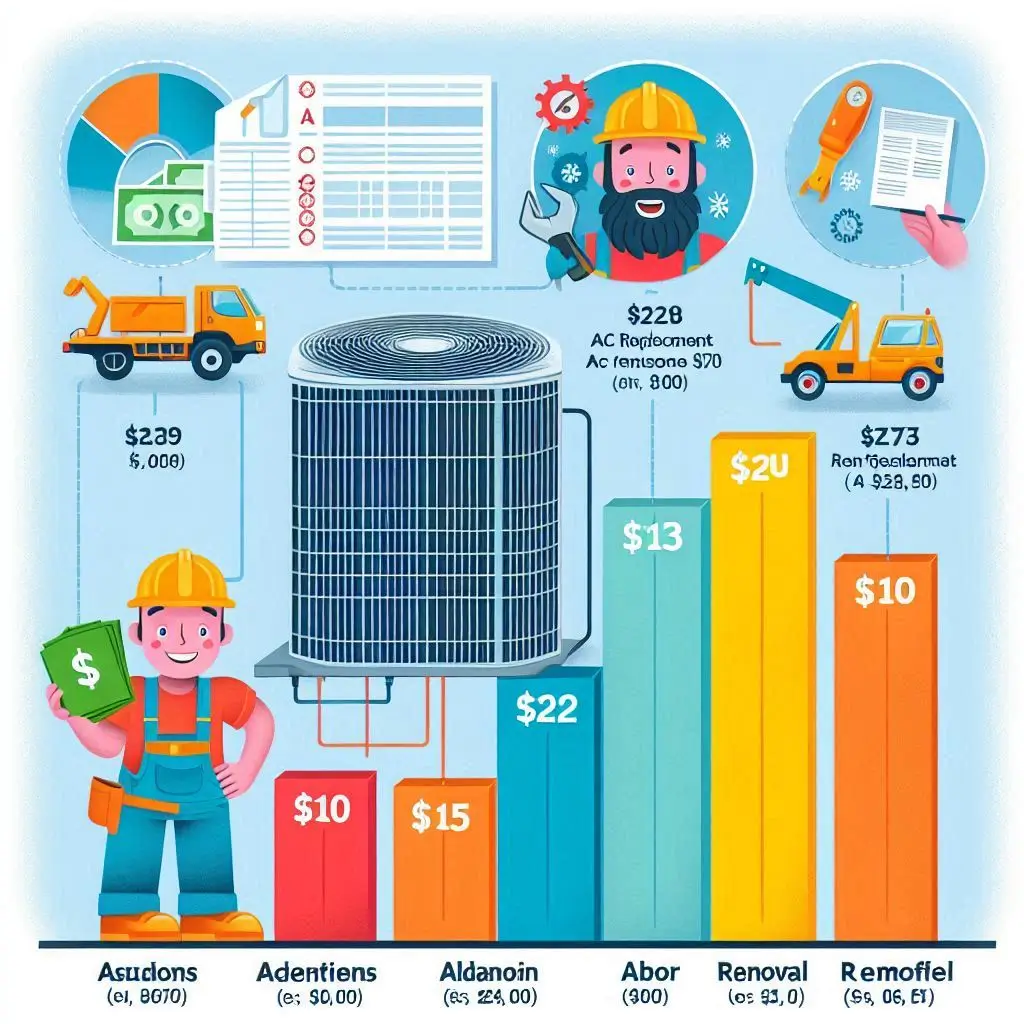
How Much Does an AC Unit Replacement Cost in 2025?
In 2025, the cost of replacing an AC unit will depend on several factors including the type of unit, its size, energy efficiency, and the installation complexity. On average, homeowners can expect to pay anywhere from $3,000 to $7,000 for a complete AC unit replacement, including installation. However, the final price will vary based on the system’s specifications and the area you live in. Understanding the breakdown of costs can help you avoid surprises and plan accordingly.
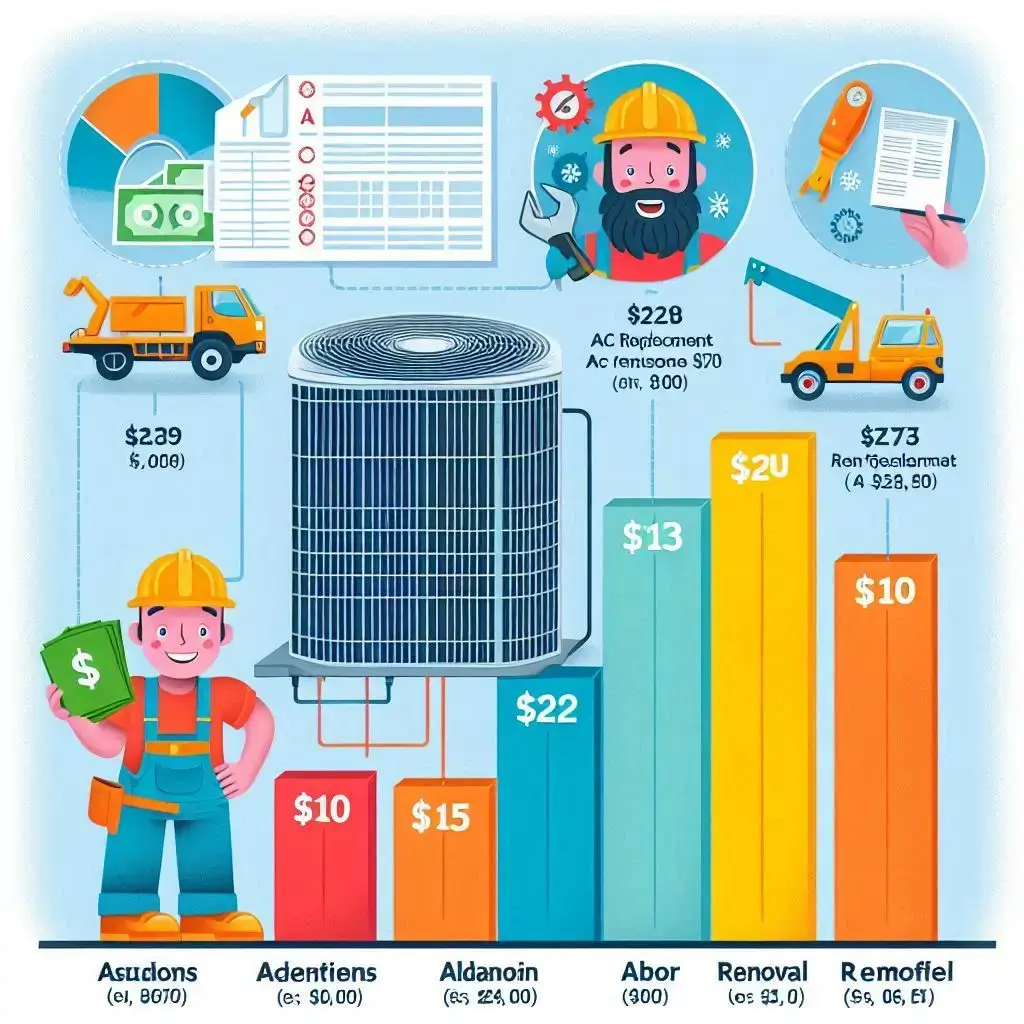
Average Price Range for AC Unit Replacement
The average cost of replacing an AC unit typically falls between $3,000 and $7,000. However, it is important to understand the different factors that contribute to this range:
-
Type of System:
The type of air conditioner system you choose plays a significant role in the cost. Central air conditioners are often the most expensive, with average installation costs ranging from $4,500 to $7,000. For homes that need ductless mini-split systems, the cost may be slightly higher, ranging from $4,000 to $8,000 due to the increased complexity of installation. Window units are the most affordable, typically costing between $150 and $800, but they are not a long-term solution for cooling an entire home. -
Cooling Capacity:
The cooling capacity of an AC unit, measured in BTUs (British Thermal Units), also affects the price. A larger unit, which is required for bigger homes or spaces, will generally cost more. For example, a 5-ton unit (for large homes) could cost anywhere from $5,000 to $6,500, while a smaller 1.5-ton unit (for smaller homes or apartments) could range from $3,000 to $4,500. -
Energy Efficiency:
The energy efficiency of the unit is another factor that impacts the price. Air conditioners with higher SEER (Seasonal Energy Efficiency Ratio) ratings are more efficient and tend to cost more upfront, but they will save you money on energy bills over time. High-efficiency models can cost $5,000 to $8,000, while lower-efficiency models will typically be priced around $3,000 to $4,500.
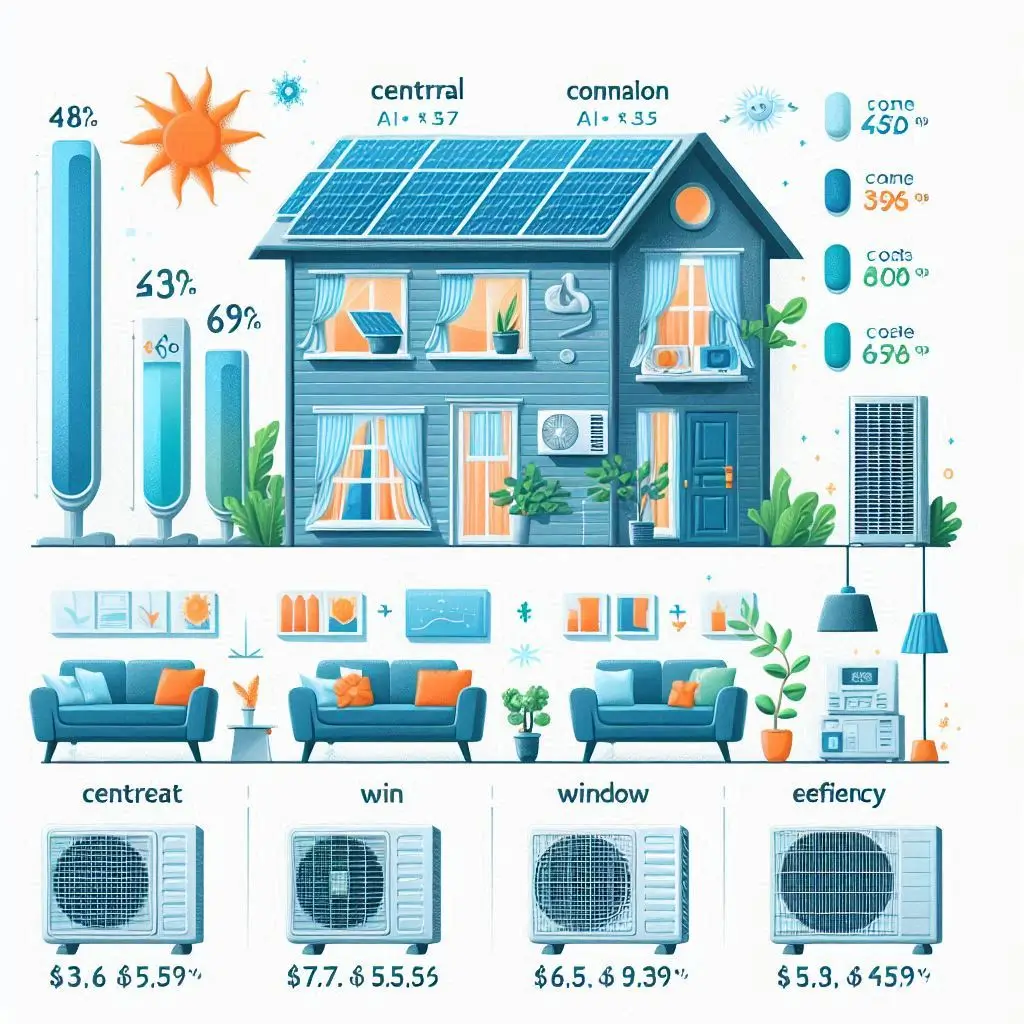
Additional Costs Beyond the Unit Price
In addition to the base cost of the air conditioning unit, there are several additional costs that can increase the overall price of replacement. These include:
-
Labor and Installation Costs:
Labor and installation costs are typically one of the most significant added expenses when replacing an AC unit. Labor charges can range from $500 to $2,500, depending on the complexity of the installation. For example, installing a central air system in a home with existing ductwork is less expensive than installing a ductless mini-split or making significant modifications to the home’s electrical systems. -
Ductwork and Ventilation:
If your existing ductwork is outdated or needs to be modified, this can add to the cost of your replacement. New ducts or duct sealing can cost anywhere from $1,000 to $5,000, depending on the size and condition of your home’s ventilation system. -
Permit and Inspection Fees:
Many municipalities require permits for AC unit installation, especially for central air systems or when electrical work is involved. Permit fees can vary greatly depending on the area but usually range from $100 to $500. Additionally, some areas may require an inspection to ensure the installation complies with local codes, adding further costs. -
Additional Features and Add-ons:
Many homeowners opt for additional features such as UV light systems, air purifiers, or smart thermostats, which can increase the overall cost. These features typically add anywhere from $200 to $2,000 to the cost, depending on the system you choose. -
Removal and Disposal of Old Unit:
When replacing an old AC unit, there may be an additional charge for removal and disposal. This cost typically ranges from $100 to $500 depending on the complexity of the removal process and whether hazardous materials like refrigerants need to be handled.
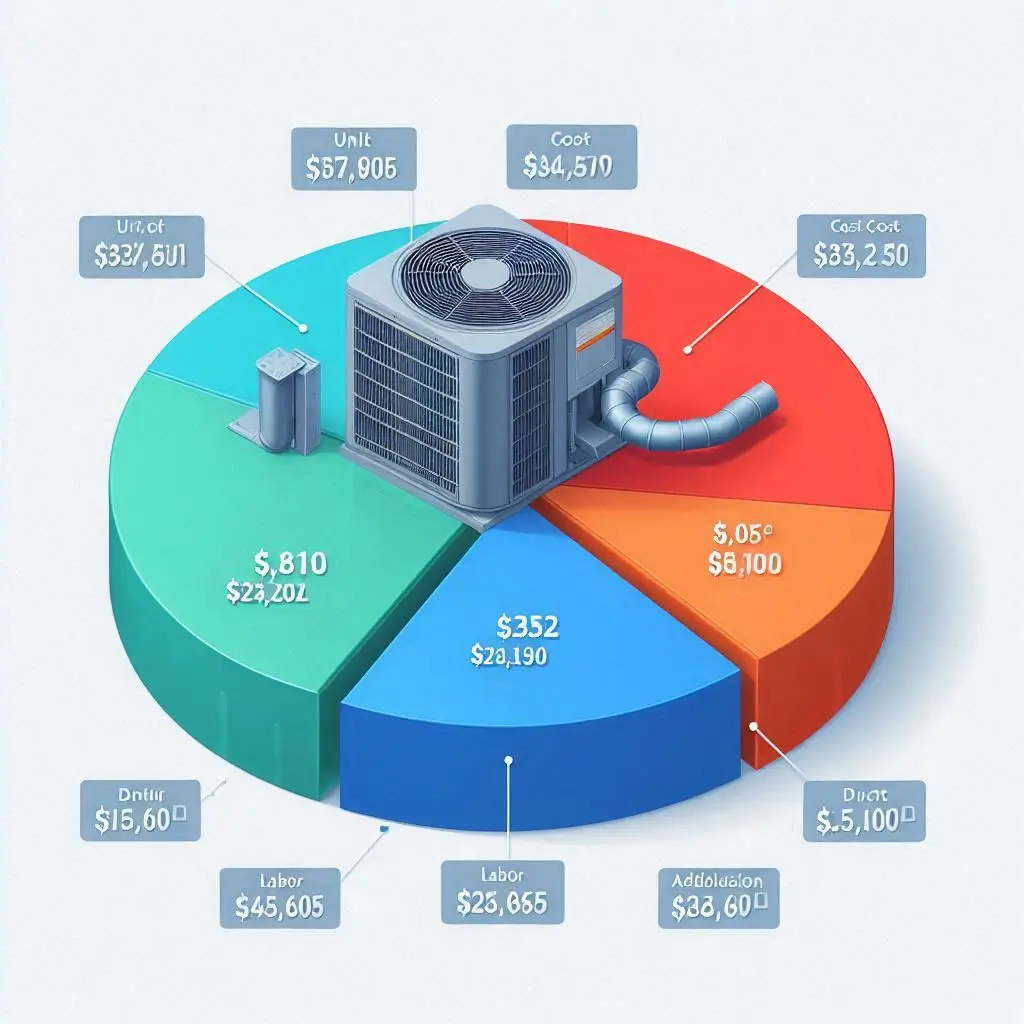
The Cost Breakdown: What’s Included in the Replacement?
When replacing an AC unit, understanding the cost breakdown can help you make an informed decision and avoid hidden fees. The price of a new AC unit installation is not just about the cost of the unit itself; it includes several other essential elements, such as labor, ductwork, and the outdoor unit. Let’s break down what you can expect to pay for and what’s typically included in the overall replacement cost.
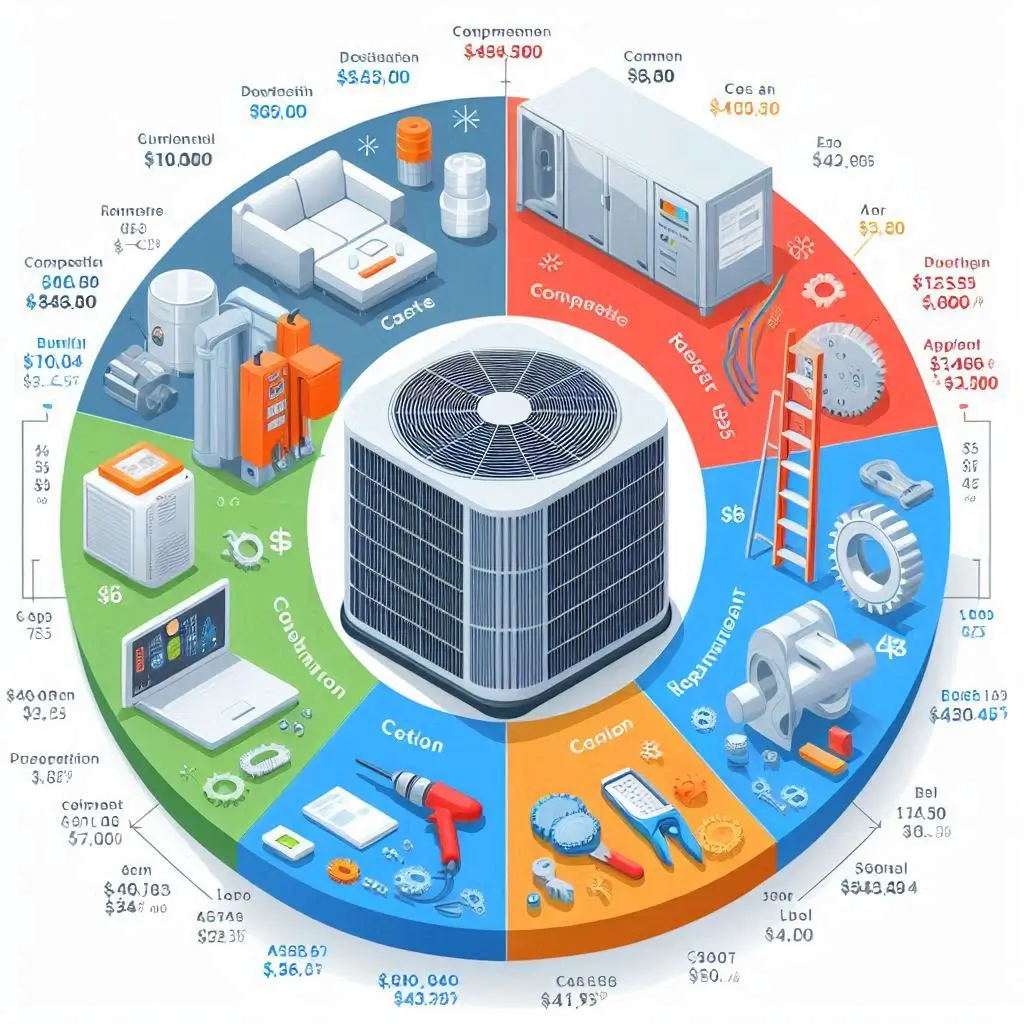
Labor and Installation Charges
Labor and installation charges are one of the biggest expenses in replacing an AC unit. The cost of labor varies based on factors such as the complexity of the installation, the region you’re located in, and the type of unit being installed. Here’s an overview of what labor charges typically cover:
-
Installation of the AC Unit:
Professional HVAC technicians will handle the entire installation process, including positioning the outdoor condenser unit, setting up the air handler or furnace, and connecting the various components. The installation process usually takes a few hours to a full day, depending on the system’s complexity and the existing setup. -
Electrical Work:
If new electrical wiring or connections are required to power the new unit, that will be an additional cost. For example, installing a high-efficiency unit might require upgrades to your home’s electrical system, especially if you are upgrading to a higher voltage unit. The labor cost for electrical work typically adds $200 to $1,000 to the overall cost. -
Removing the Old Unit:
HVAC technicians will need to remove the old AC unit, and there may be additional labor fees for this service. Depending on the complexity of the removal, this could cost anywhere from $100 to $500. If the system is large or heavy, it could incur higher charges due to the labor involved in removing and disposing of the old system. -
HVAC System Calibration:
After the installation, HVAC professionals will typically calibrate the system to ensure it’s working properly. This includes checking refrigerant levels, ensuring proper airflow, and running diagnostics. This step is essential to ensure optimal performance of the new system.
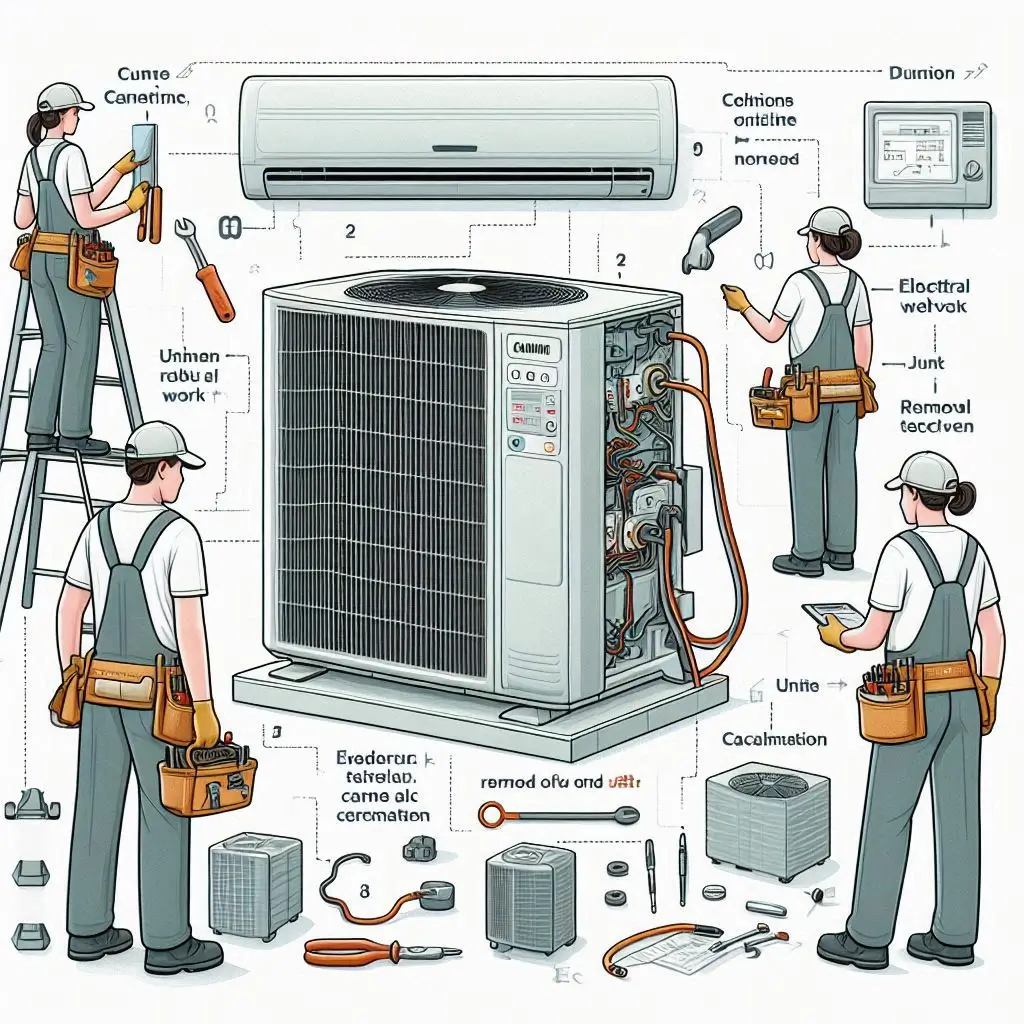
Outdoor Unit and Ductwork Considerations
The outdoor unit and ductwork are key components in determining the overall cost of your AC unit replacement. Here’s a breakdown of what is included with these two crucial elements:
-
Outdoor Unit Installation:
The outdoor condenser unit is essential for cooling your home, and its installation can significantly impact the overall cost. Installing the outdoor unit includes setting up the condenser, ensuring it’s positioned correctly, and connecting it to the indoor evaporator coil via refrigerant lines. Labor costs for outdoor unit installation typically range from $500 to $1,500. -
Ductwork Modifications:
If your home has existing ducts, the technician will inspect them for leaks, damage, or inefficiency. Old, dirty, or inefficient ducts can reduce the overall efficiency of your new system, so they might need to be replaced or sealed. The cost of ductwork installation or repair ranges from $1,000 to $5,000, depending on the size of your home and the condition of your ducts. If ductwork needs to be installed in a home without existing ducts, the cost can be much higher. -
Duct Sealing and Cleaning:
Even if the ducts are in good condition, you may need to pay for duct sealing or cleaning to ensure maximum efficiency. Duct sealing can prevent air leaks that waste energy, while cleaning the ducts ensures cleaner air and better system performance. These services typically add another $300 to $1,500 to the cost of the replacement. -
Refrigerant Line Installation:
If your new system requires different refrigerant lines, those will need to be installed or replaced. This is often necessary when upgrading to a higher-capacity system. Depending on the complexity and materials used, refrigerant line installation can cost between $200 and $1,000.
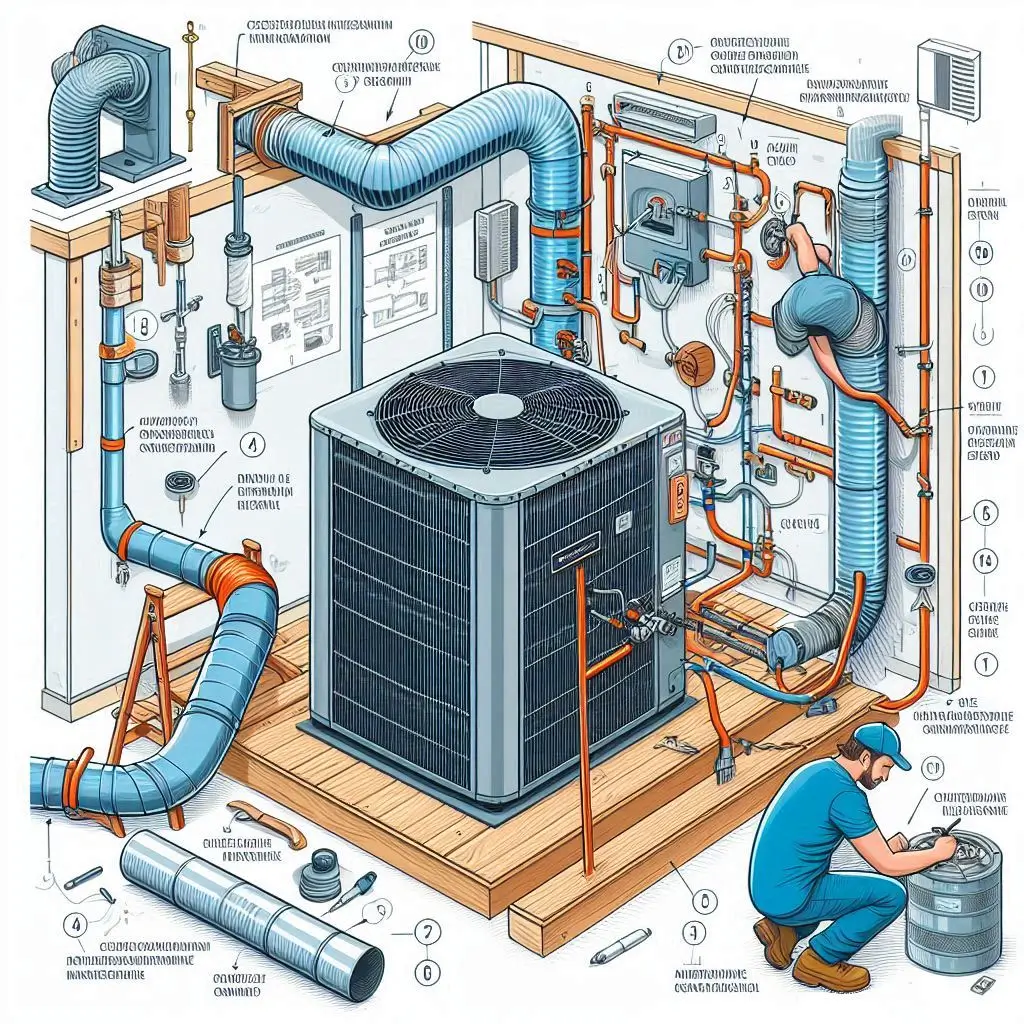
Choosing the Right Size AC Unit: Bigger Units, Bigger Costs
When it comes to air conditioning, size matters—both in terms of cooling efficiency and cost. Choosing the right-sized AC unit for your space is crucial not only for comfort but also for ensuring energy efficiency and long-term savings. Selecting a unit that’s too big or too small can lead to wasted energy, higher costs, and reduced performance. Let’s explore how the size of an AC unit affects its price and efficiency, and why proper sizing is essential for maximizing long-term savings.
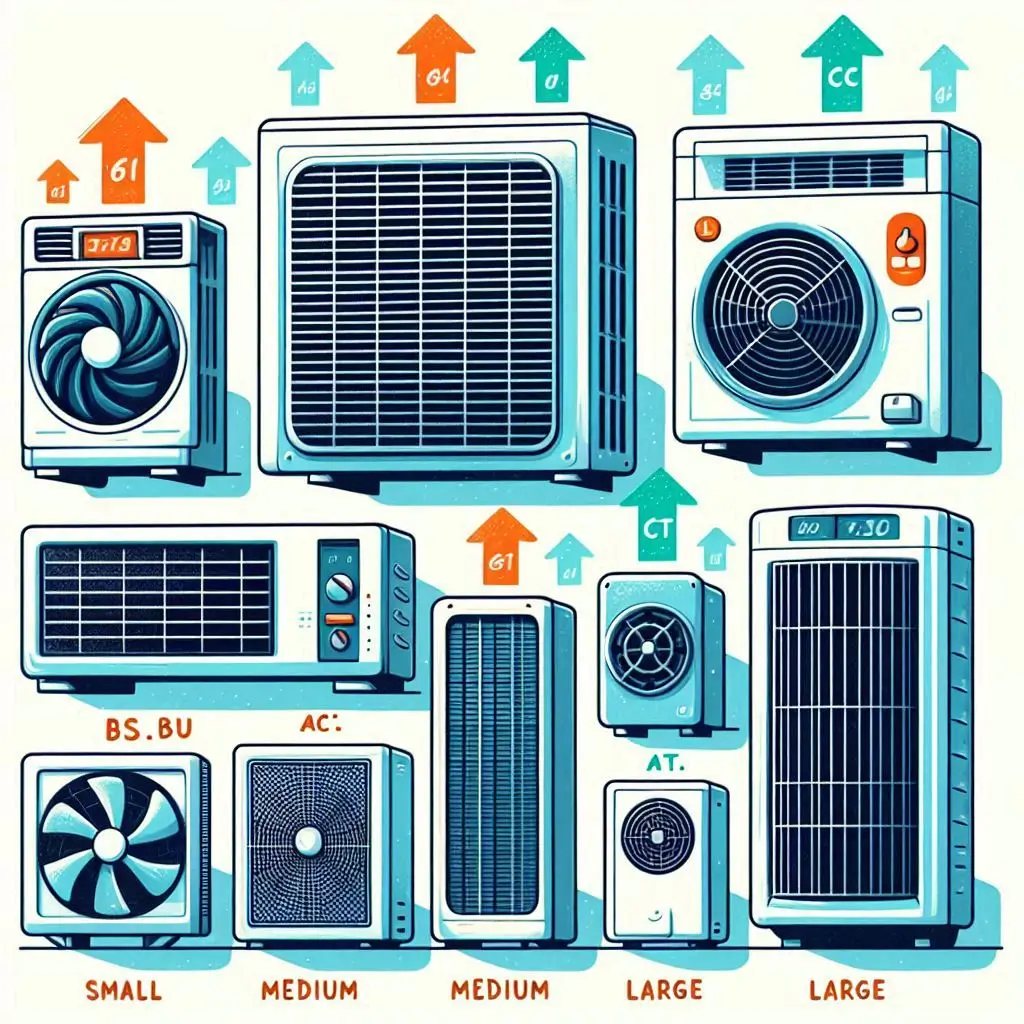
How Size Affects Price and Efficiency
The size of the AC unit is one of the key factors that affect both its price and its efficiency. Here’s a detailed look at how size impacts both:
-
Cooling Capacity and BTUs:
AC units are rated based on their cooling capacity, measured in BTUs (British Thermal Units). The larger the space you need to cool, the higher the BTU rating you’ll need for the unit. As the size of the unit increases, so does the price. Typically, a 1.5-ton unit (18,000 BTUs) can cost anywhere from $3,000 to $4,500, while a 5-ton unit (60,000 BTUs) can run between $5,000 and $7,500. -
Energy Efficiency:
The larger the AC unit, the more energy it consumes. However, this doesn’t always mean it will cool more efficiently. Over-sizing or under-sizing the unit can lead to inefficient operation. An oversized unit will cool the space too quickly without dehumidifying the air properly, leading to frequent on-and-off cycles. This can waste energy and increase your electricity bills. On the other hand, an undersized unit will run continuously, struggling to keep up with the cooling demands, which also leads to higher energy consumption. -
Installation and Additional Costs:
Larger units typically require more extensive installation work, such as more refrigerant, additional ductwork, and extra electrical setup. These additional installation costs can add anywhere from $500 to $2,000 to the overall cost. Properly sizing the AC unit ensures that you’re not paying for unnecessary upgrades or larger units that won’t yield any additional benefit in terms of cooling efficiency.
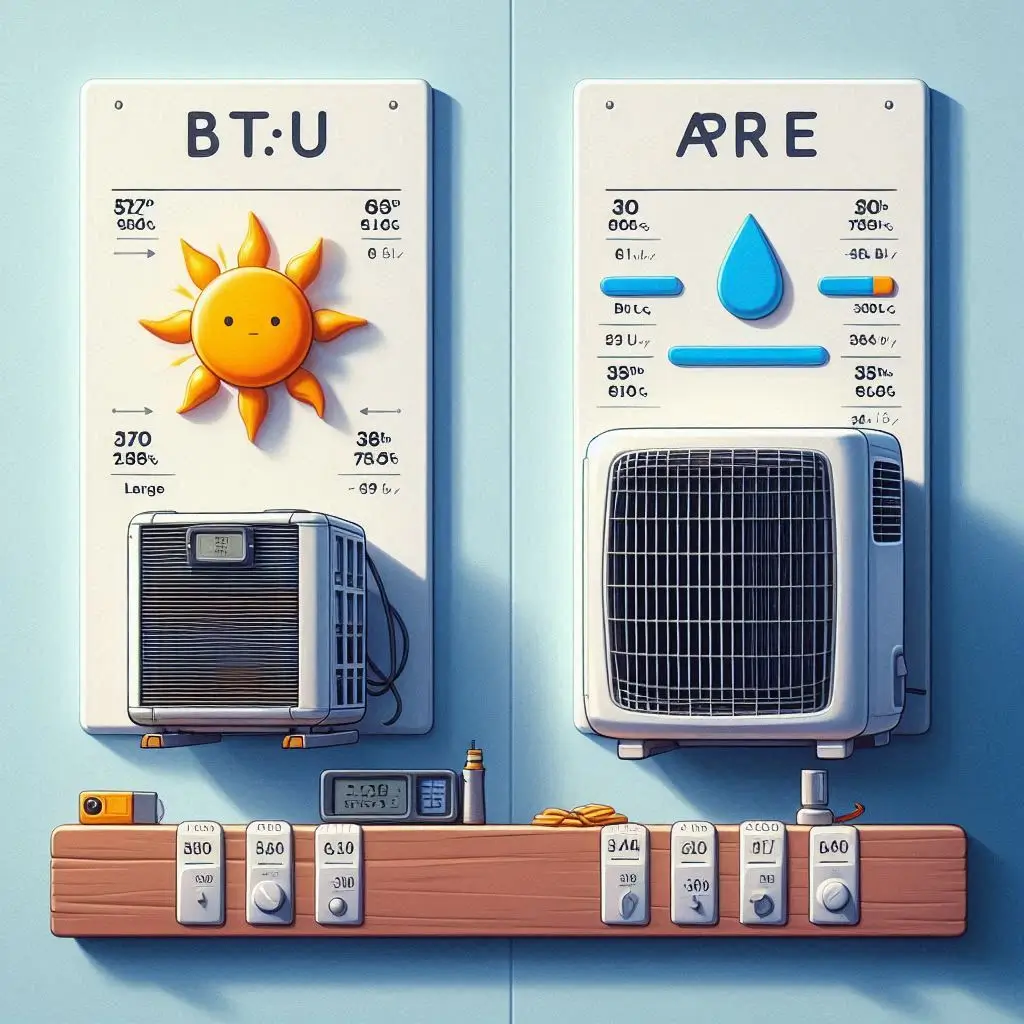
Why Sizing Your AC Unit Matters for Long-Term Savings
Choosing the right-sized AC unit is crucial for maximizing your investment and ensuring long-term savings. Here’s why:
-
Avoid Wasting Money on Energy Bills:
An improperly sized unit—whether too big or too small—can lead to wasted energy and inflated utility bills. With the right size, your AC will run more efficiently, helping you save on energy costs in the long run. A correctly sized unit also helps maintain a consistent temperature, reducing the strain on the system and its need for repairs or premature replacement. -
Extended Lifespan of the AC Unit:
A well-sized AC unit that is neither overworked nor underutilized will last longer. Units that are too large for your space tend to cycle on and off more frequently, which puts additional strain on the compressor and other components. This results in more wear and tear, shortening the lifespan of the unit. Conversely, a unit that’s too small will run continuously, leading to overheating and more frequent breakdowns. -
Optimal Comfort:
Properly sizing your AC ensures that you maintain consistent and comfortable temperatures in your home. An oversized unit will cool the space quickly but might not remove enough moisture, making the air feel clammy. On the other hand, an undersized unit will struggle to cool the space effectively, leaving hot spots and inconsistent temperatures throughout your home. -
Reduced Maintenance Costs:
A properly sized unit will require fewer repairs over its lifetime. Regular breakdowns and repairs are often a result of poorly sized units that are forced to work harder than they should. By sizing your unit correctly from the start, you can reduce the frequency of costly repairs and extend the time between replacements.
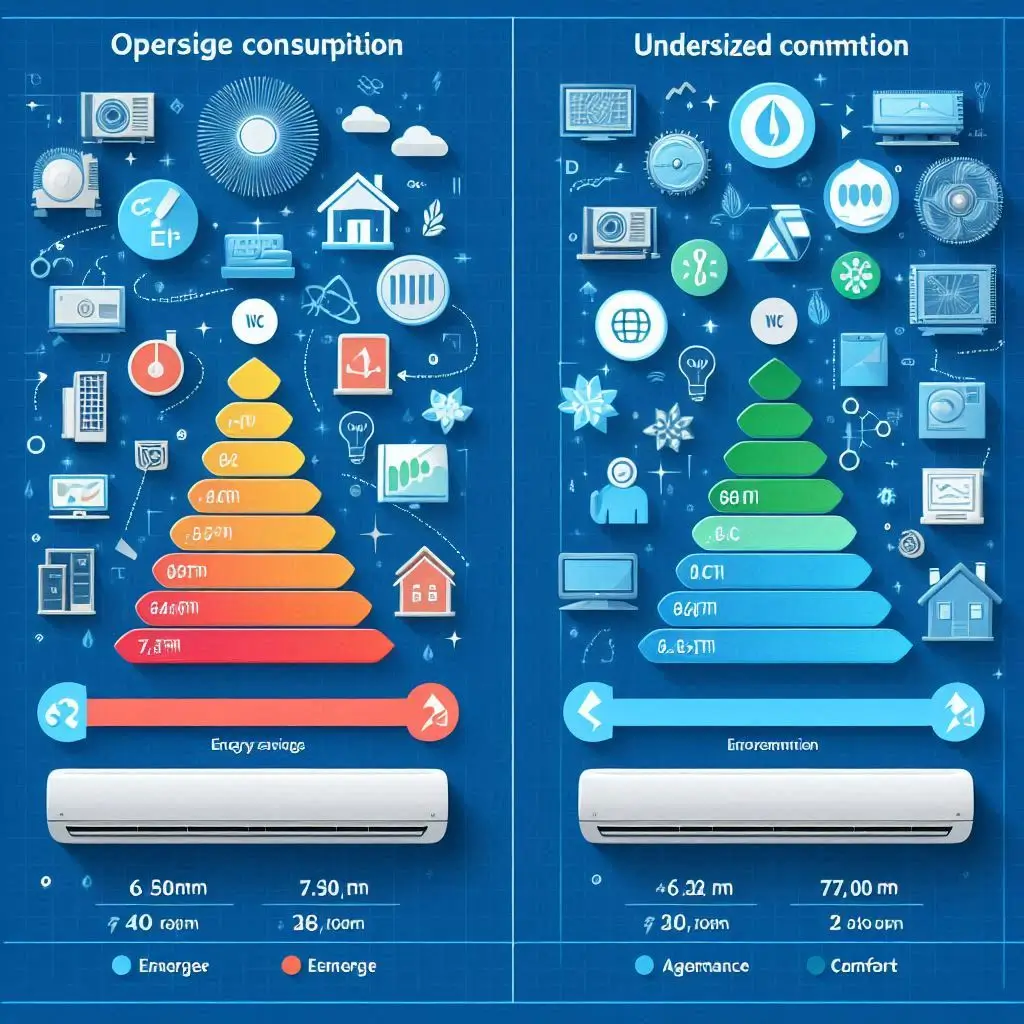
Finding the Most Cost-Effective AC Unit Brands
When it comes to replacing your AC unit, brand selection plays a major role in both the initial cost and the long-term performance of your system. With numerous brands on the market, it’s essential to identify which ones offer the best value for your money. While the initial purchase price is important, factors like reliability, energy efficiency, warranty, and after-sales service also need to be considered. This section will guide you through the most cost-effective AC unit brands and why choosing the right one can save you money in the long run.
Comparing the Best AC Brands for Value and Reliability
When evaluating the best AC brands, it’s crucial to consider not only the upfront cost but also their long-term reliability and value. Here are some of the most trusted brands in the HVAC industry, known for delivering both affordable and durable units:
-
Carrier
Carrier is one of the oldest and most reputable names in the HVAC industry, known for producing high-quality AC units. While Carrier units are on the more expensive side, their reliability and energy efficiency make them a good long-term investment. With features like Energy Star ratings, advanced cooling technology, and long warranties, Carrier units often provide great value for their cost. -
Trane
Trane AC units are renowned for their reliability and durability. They are built to withstand extreme weather conditions, making them a popular choice for areas with harsh climates. Trane’s pricing is typically on the higher end, but their systems are designed for long-term performance, which can save you money on repairs and maintenance in the future. Trane also offers energy-efficient models that help keep utility bills low. -
Lennox
Lennox is another high-end brand that’s known for its energy-efficient systems. Their systems are often more expensive upfront, but the energy savings over time can make them a cost-effective choice in the long run. Lennox offers models with variable-speed technology, which provides better humidity control and more precise temperature regulation, leading to better comfort and lower energy consumption. -
Goodman
Goodman offers affordable AC units that don’t sacrifice quality. Their units are known for offering great value, with a wide range of options for different budgets. Goodman’s warranty programs are also quite competitive, and they offer some of the most cost-effective models on the market without compromising on reliability or efficiency. While Goodman may not have all the premium features of higher-end brands, it provides reliable performance at an affordable price point. -
Rheem
Rheem provides solid mid-range AC units with excellent warranties and solid customer service. They are known for offering a balance of price and performance, providing reliable cooling with good energy efficiency. Rheem units are often priced lower than premium brands, but they still offer great reliability and value for their price.
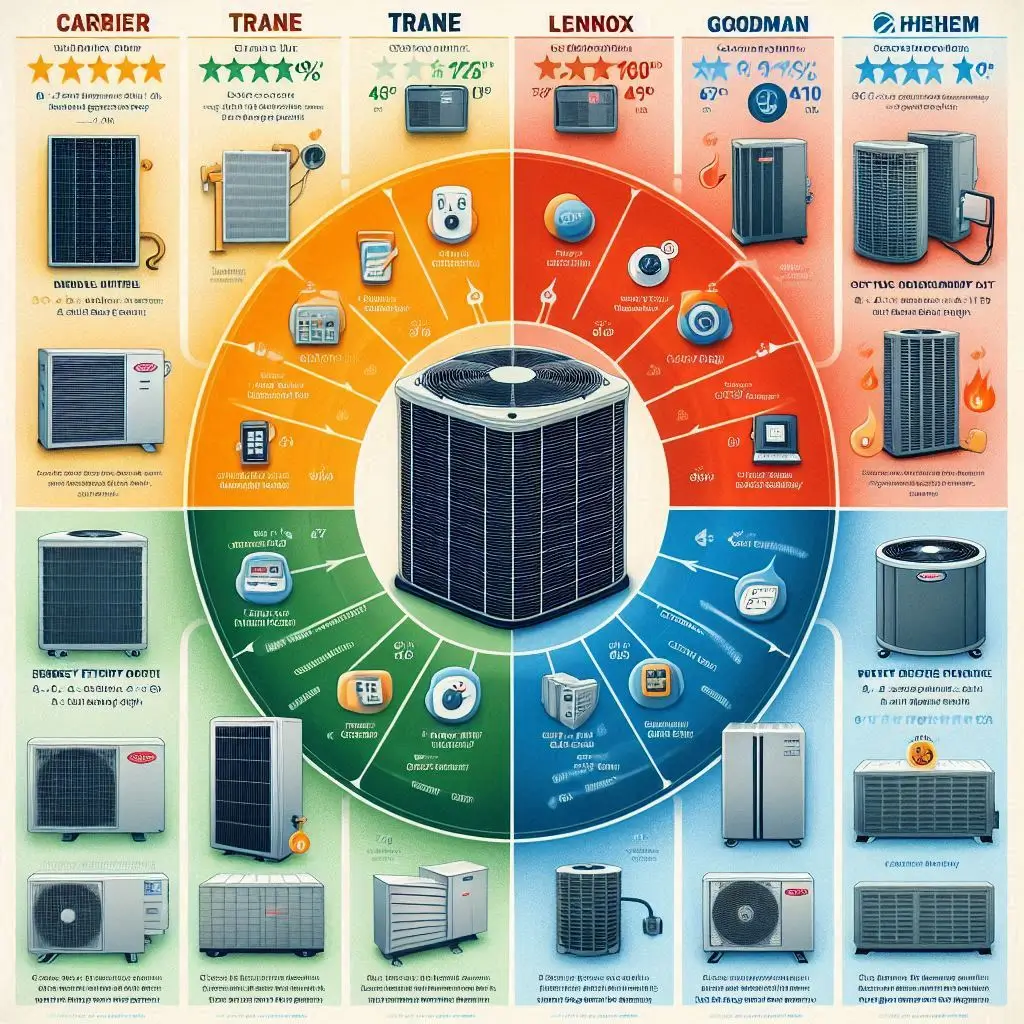
Why Brand Selection Impacts Total Cost
Choosing the right AC unit brand not only affects the initial purchase price but also has a significant impact on the total cost of ownership. Here are the key reasons why brand selection is crucial when considering the long-term costs:
-
Energy Efficiency
More reliable brands tend to offer units that are more energy-efficient. A higher-efficiency unit will reduce the amount of electricity required to cool your home, resulting in lower monthly utility bills. Brands like Lennox, Carrier, and Trane are known for producing high-efficiency units that can save you a considerable amount of money over the life of the system. Energy-efficient units typically have higher upfront costs but can lead to long-term savings. -
Warranty and Support
The warranty provided by the brand plays a significant role in long-term costs. A strong warranty can save you from high repair and replacement costs if the system fails unexpectedly. Brands like Trane and Carrier offer long-term warranties and excellent customer support, which can offset initial costs over the lifespan of the unit. On the other hand, budget brands may have shorter warranties or limited support, potentially leading to higher maintenance costs in the future. -
Maintenance and Repair Costs
Premium brands are often easier and less expensive to maintain due to their reliable construction and high-quality parts. The cost of repairs for premium brands may also be lower because the parts are readily available and technicians are familiar with the systems. Conversely, lower-cost or off-brand units may require more frequent repairs, which can add up over time. -
Long-Term Durability
Investing in a well-established brand often means investing in a more durable system. While cheaper brands may save you money upfront, they may not last as long, leading to higher replacement costs sooner than expected. Well-established brands like Carrier and Trane, although more expensive initially, tend to have a longer lifespan, making them more cost-effective in the long term.

How to Get the Best Deal on Your AC Unit Replacement
Replacing your AC unit is a significant investment, and getting the best deal means not just finding the lowest price but also ensuring you get value for your money. This section will provide actionable tips for negotiating the price with HVAC companies, as well as insights into why HVAC companies charge different rates. By following these strategies, you can save on upfront costs while ensuring your new AC unit is a long-term solution for your home.
Tips for Negotiating the Price with HVAC Companies
Negotiating the price for your AC unit replacement doesn’t have to be intimidating. HVAC companies are often open to negotiation, especially if you come prepared. Here are some effective tips to help you secure the best deal:
-
Get Multiple Quotes
One of the most effective ways to ensure you’re getting a fair price is by obtaining multiple quotes from different HVAC companies. This will give you a better understanding of the average market rate and allow you to compare prices. Don’t hesitate to ask companies to match or beat a competitor’s price. HVAC companies will often lower their rates if they know you’re considering other options. -
Consider Off-Season Purchases
Timing is everything when it comes to purchasing an AC unit. HVAC companies tend to have lower demand during the fall and winter months, which can result in lower prices and discounts. Replacing your AC unit during these off-seasons might save you money while also allowing HVAC companies to offer more flexibility on installation scheduling. -
Ask for Discounts or Rebates
Many HVAC companies offer seasonal discounts, manufacturer rebates, or financing options that can help reduce your overall cost. Ask about any available promotions, especially if you’re purchasing a high-efficiency or premium-brand unit. Additionally, some local utility companies offer rebates for installing energy-efficient units, which can lower your overall costs even more. -
Negotiate for Free Add-Ons
While negotiating, it’s important to look for ways to maximize value. For example, see if the HVAC company is willing to throw in additional services like free air duct cleaning, maintenance for the first year, or an extended warranty. These small add-ons can enhance your purchase and save you money on future maintenance costs. -
Consider Financing Options
If the upfront cost is too high, consider asking the HVAC company about financing options. Many companies offer low-interest or zero-interest financing for qualified buyers. Even though this doesn’t directly lower the price, it can make the cost more manageable by spreading the payment out over time.
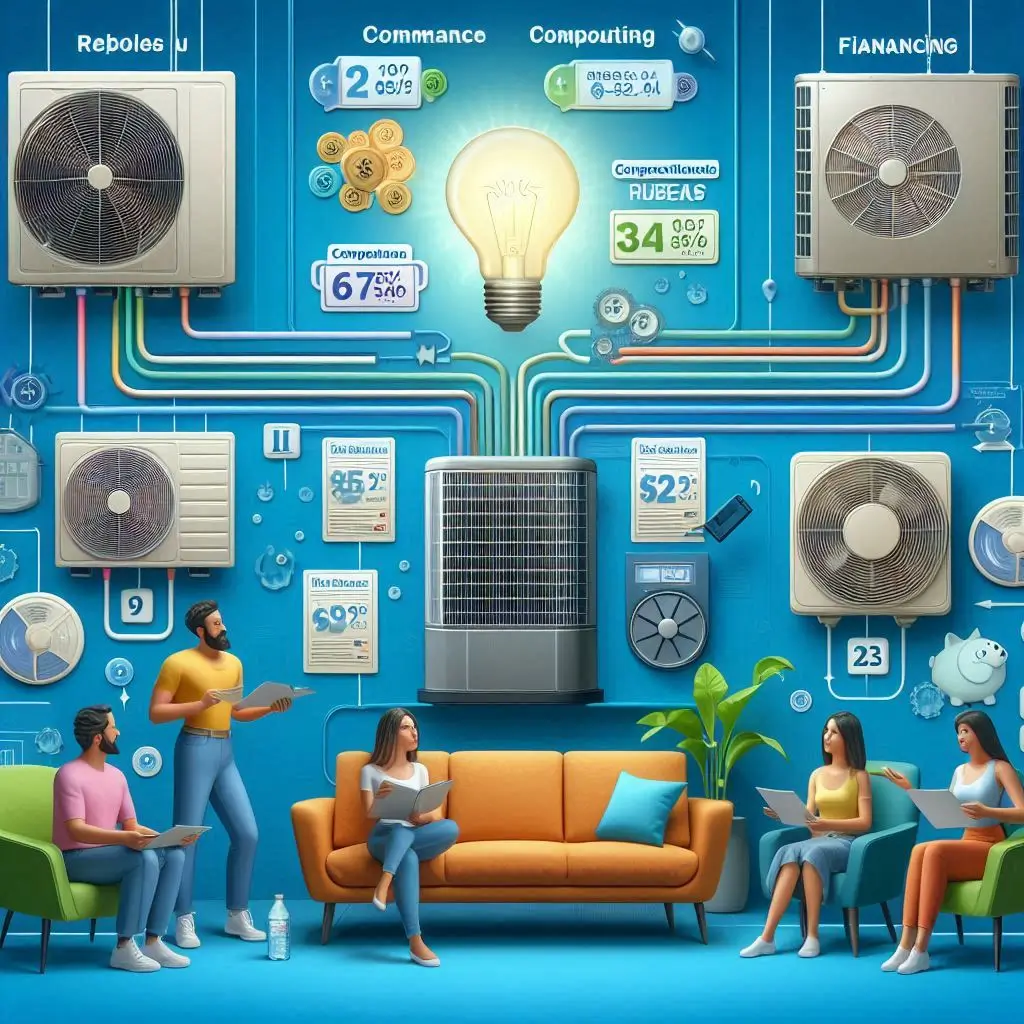
Why Different HVAC Companies Charge Different Rates
It’s important to understand that not all HVAC companies charge the same rates for their services. Several factors influence the pricing structure of different companies, including the following:
-
Location and Service Area
HVAC companies in different geographic locations may charge different rates based on local market conditions. For instance, companies in more urbanized areas or regions with extreme climates may have higher labor costs due to demand for services. On the other hand, companies in rural or less-populated areas may charge lower rates because of less demand. -
Company Reputation and Experience
Established companies with a strong reputation often charge higher rates due to their experience, expertise, and high-quality service. They may also have more advanced diagnostic tools, superior products, and more skilled technicians. While you may pay a premium for these companies, the higher cost may be worth it in terms of reliable service, fewer breakdowns, and longer-lasting equipment. -
Labor Costs and Licensing Fees
Labor costs vary by company depending on their technicians’ experience and expertise. HVAC companies that employ highly skilled technicians with specialized certifications may charge higher labor fees. Additionally, some companies may pass along higher licensing, insurance, or operational costs to customers, which could lead to higher overall rates. -
The Type of AC Unit Being Installed
Different types of AC units come with varying price points, and HVAC companies may charge different installation fees based on the unit type. For example, installing a ductless mini-split system may require more specialized labor and expertise compared to a standard central air system. Specialized systems often have higher installation rates due to the additional work and tools required. -
Quality of Products and Services
HVAC companies that offer high-quality, energy-efficient, or high-end units often charge more for their equipment. These units tend to have longer lifespans, better performance, and higher energy efficiency, which can lead to long-term savings on energy bills. However, the initial cost may be higher compared to standard or low-cost units offered by other companies.
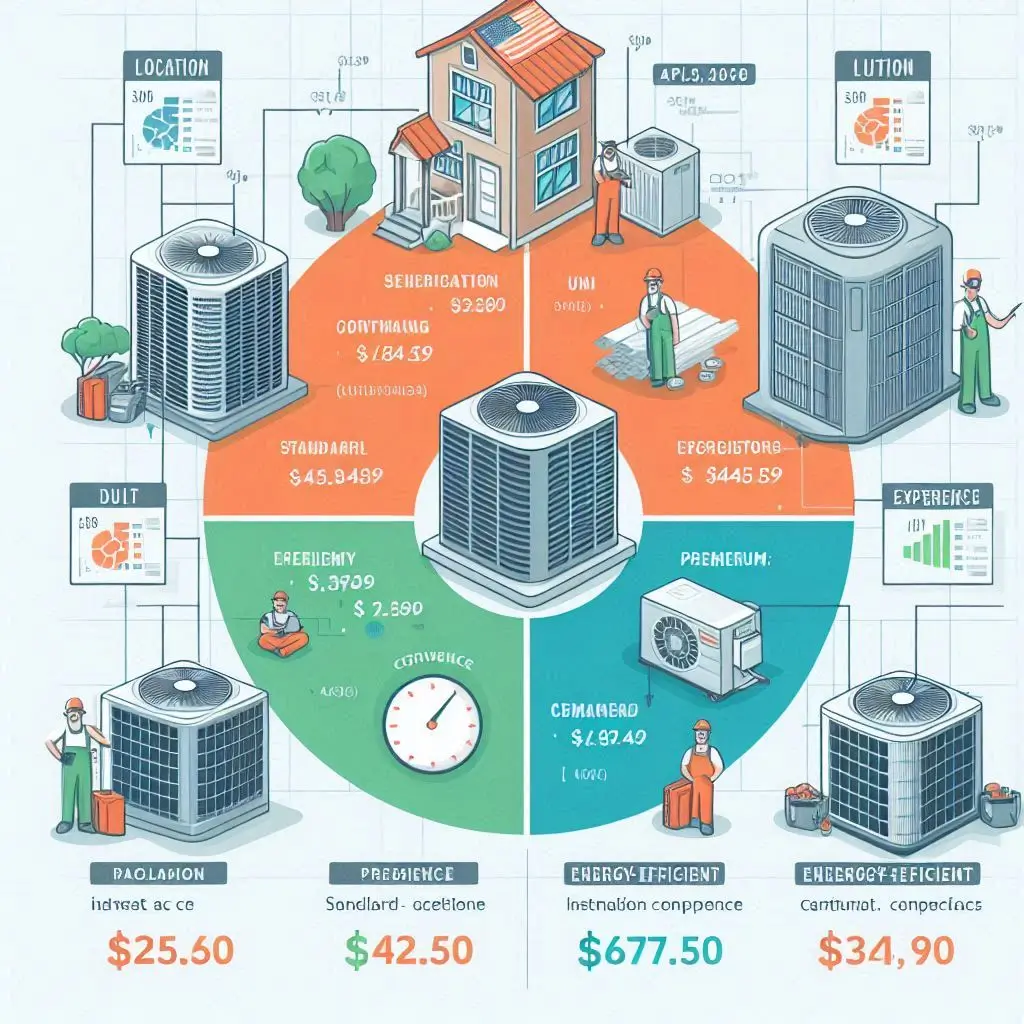
FAQ: AC Unit Replacement Cost
Replacing your AC unit is a significant investment, and understanding the cost factors, selection process, and how to get the best value is essential. Here are some frequently asked questions about AC unit replacement costs, with expert answers to help you navigate the process.
What is the average cost of replacing an AC unit?
The average cost of replacing an AC unit in 2025 ranges between $3,000 and $7,000, depending on several factors such as the type of system, brand, size, and additional installation requirements. This price typically includes the cost of the unit, labor charges, and standard installation fees.
For a more specific breakdown:
- Basic Central AC Units: These generally range from $3,000 to $5,000 for smaller homes and standard models.
- High-Efficiency Models: Units with higher SEER ratings or smart technology can cost between $5,000 to $7,000 or more.
- Ductless Mini-Split Systems: These systems usually range from $4,000 to $8,000, as they often require more specialized installation.
- Premium Brands and Larger Units: If you’re opting for a larger unit or a premium brand (like Trane, Carrier, or Lennox), costs can exceed $8,000.

What factors influence the cost of AC unit replacement?
Several factors can affect the overall cost of replacing your AC unit. Understanding these variables helps ensure you’re prepared for the investment and can make informed decisions. Key factors include:
-
AC Unit Size and Capacity
Larger AC units (measured in BTUs or tons) typically cost more to purchase and install because they require more materials and energy to operate. Your home’s square footage will help determine the right size, with larger homes needing more powerful systems. -
Type of System
The type of air conditioning system you choose significantly impacts cost. For example, a central air system typically costs less than a ductless mini-split system, which requires separate indoor units for each zone. Hybrid systems and heat pumps are also options that can affect pricing. -
Brand and Quality
Premium brands or energy-efficient systems often come at a higher upfront cost but may offer long-term savings through lower energy consumption and fewer repairs. High-end brands such as Carrier, Trane, and Lennox are more expensive initially but provide excellent reliability and warranty options. -
Installation Complexity
The complexity of installation also plays a crucial role in pricing. If your home has pre-existing ductwork, installation can be quicker and less expensive. However, if you require new ductwork, retrofitting, or modifications to existing systems, labor costs can increase. Additionally, homes with challenging layouts or limited access for installation may result in higher labor charges. -
Location and Climate
HVAC companies may adjust their prices based on the local market, climate, and competition. For example, regions with extreme temperatures may experience higher demand, leading to increased prices during peak seasons (summer or winter). Urban areas may also have higher labor and material costs compared to rural locations.
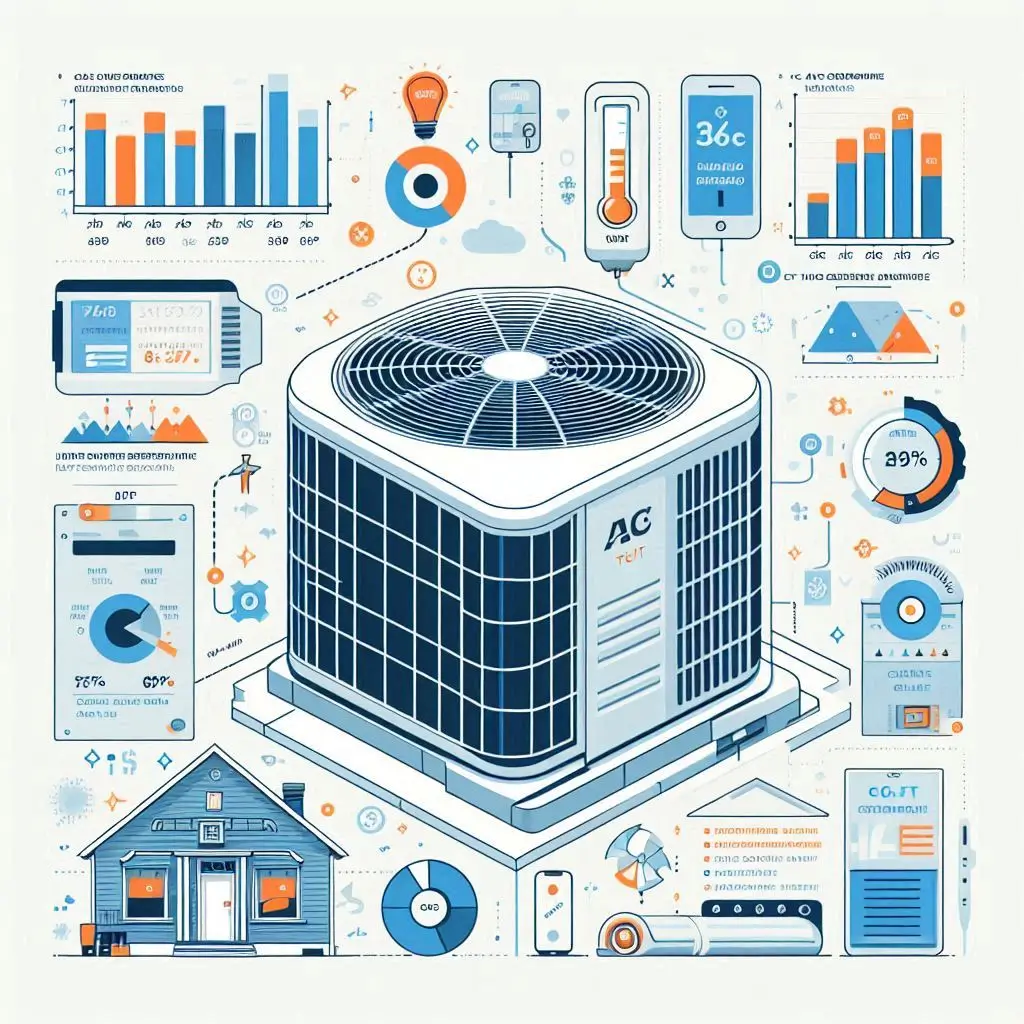
How do I choose the best AC unit for my budget?
Choosing the best AC unit within your budget requires balancing price with efficiency, reliability, and long-term value. Here’s a step-by-step guide to help you select the right unit:
-
Determine the Right Size for Your Home
One of the most important considerations when choosing an AC unit is the size of your home. A unit that’s too small will struggle to cool your space, while one that’s too large will waste energy. Work with a professional HVAC technician to perform a Manual J load calculation, which determines the ideal size based on your home’s square footage, insulation, and climate. -
Consider Energy Efficiency
While energy-efficient units may have a higher upfront cost, they can save you money in the long run by lowering your energy bills. Look for units with a high SEER (Seasonal Energy Efficiency Ratio) rating, which indicates better energy efficiency. An ENERGY STAR-certified unit can be a good option for balancing cost and savings. -
Choose a Reliable Brand
Stick with reputable HVAC brands known for durability and reliability. While premium brands may cost more initially, they often come with extended warranties, higher efficiency, and fewer maintenance needs. Research customer reviews and ratings to identify brands with positive reputations. -
Evaluate the Total Cost of Ownership
Don’t just focus on the initial price. The total cost of ownership includes maintenance costs, the lifespan of the unit, and energy usage. Invest in a unit that balances upfront cost with lower operating and maintenance costs. -
Get Multiple Quotes
Before making a final decision, get at least three quotes from different HVAC companies. This will allow you to compare the total cost, including installation and service, and find the best value for your money. -
Financing and Rebates
If budget is a concern, consider asking about financing options or manufacturer rebates. Many HVAC companies offer flexible payment plans, while local utility companies may offer rebates for purchasing high-efficiency units.

Conclusion:
In conclusion, understanding the AC unit replacement cost is essential for making an informed decision when it comes to upgrading your cooling system. From determining the factors that influence cost to selecting the right size and brand for your needs, every element plays a vital role in the overall investment. By considering factors such as energy efficiency, installation complexity, and long-term savings, you can ensure that you’re not only staying within budget but also making a smart choice for the comfort and sustainability of your home. Whether you’re replacing an old system or installing a new one, knowing how to get the best deal and understanding the true cost of AC unit replacement will help you make a confident and informed choice.

